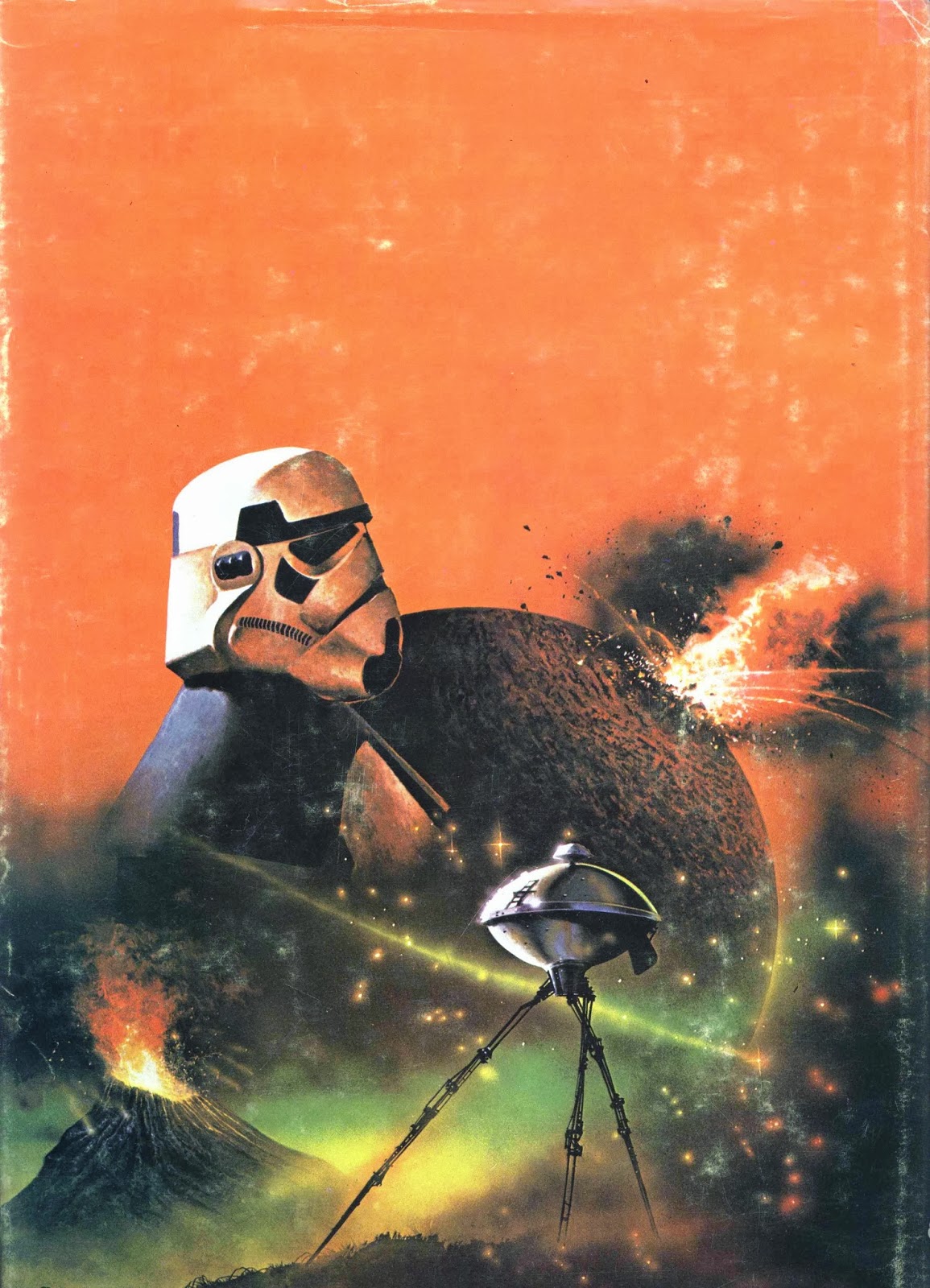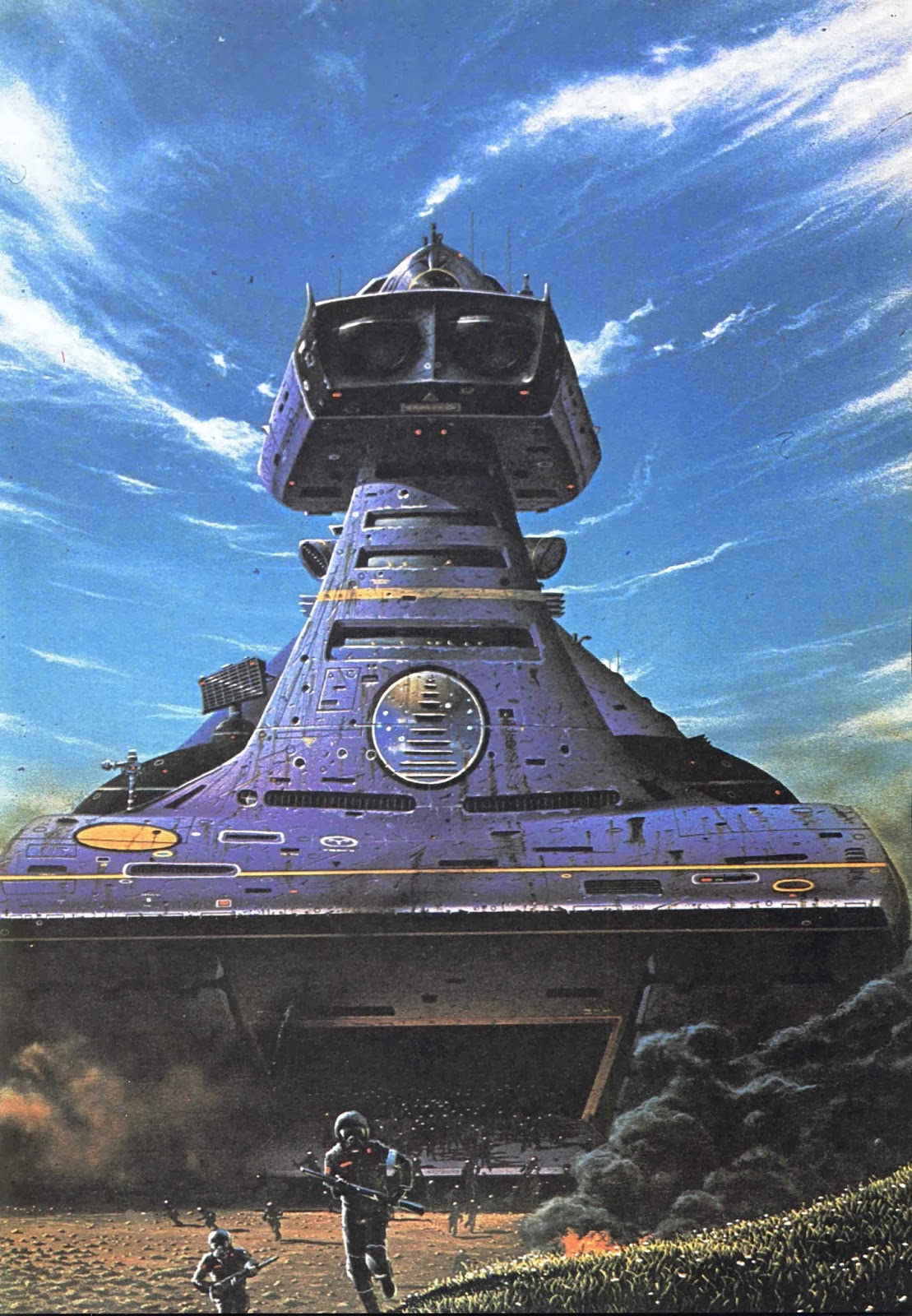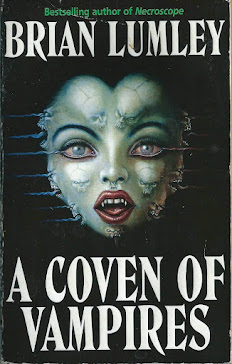'The Encyclopedia of Science Fiction' edited by Robert Holdstock
'The Encyclopedia of Science Fiction' was one of three such books issued in the late 70s, the others being 'The Science Fiction Encyclopedia' (1979), edited by Peter Nicholls, and 'The Visual Encyclopedia of Science Fiction' (1977), edited by Brian Ash.
TESF (224 pp.) was published by Octopus Books in December 1978; the front cover artwork is by Tony Roberts.
(The version in my possession was a SF Book Club edition; it was poorly made, and the glue binding the pages is crumbling away leaving the pages very loose - take this into consideration if you are thinking of obtaining a copy).
The book features a Forward by Isaac Asimov, and an Introduction by editor Holdstock.
The initial chapter covers the early history of the genre: 'Marriage of Science and Fiction', by Brian Stableford.....
'Major Themes' by Douglas Hill, is self-explanatory.
As is the 'Pulps and Magazines' chapter by Michael Ashley.
'Screen Trips', by Alan Frank, covers sf in movies and TV; his coverage of Star Wars is surprisingly favorable; many SF editors and pundits were, by the end of '78, bemoaning the way the film had 'infantilized' the genre.
'Machine as Hero', by Harry Harrison, is an overview of the way SF approaches technology.
'Alien Encounter', by Chris Morgan, is an overview of aliens and their treatment in SF.
'Art and Artists', by David Hardy, covers SF artwork from the early days of the genre, through the Pulp Era, and on into the 60s and 70s. There is good coverage in this chapter of the impact British artists had on the genre starting in the 70s, particularly Chris Foss, Tony Roberts, Tim White, Angus McKie, Jim Burns, and Chris Moore, among others.
'Fiction to Fact', by Patrick Moore, discusses how many themes in older SF works have been made real by advancing technology.
'Outer Limits', by Ashley, covers SF in non-English speaking countries. Christopher Priest contributes the chapter on 'New Wave'. It's a well-written overview of this aspect of the genre, focusing on the works of the 60s and early 70s, but at the time Priest wrote the chapter, in 1978, the New Wave continued to retain its influence.
'Yesterday, Today, and Tomorrow', by Malcolm Edwards, covers 'modern' SF, which more or less refers to the genre in the late 70s, after the advent of Star Wars brought considerable expansion of the genre both artistically and commercially.
The books closes with some brief appendices that cover the the phenomenon of collecting SF books, magazines, artwork, and other memorabilia; SF fandom; a listing of pseudonyms used by major authors; awards; listings of SF magazines, films, and conventions; and biographical sketches of all the Encyclopedia's contributors, showing them all in their late 70s glory:
Like any encyclopedia, TESF has become dated, and it lacks the comprehensiveness of The Science Fiction Encyclopedia from Nicholls; but it retains considerable value as an examination of the genre as it was in the late 70s. The illustrations are copious and serve as a very good complement to the text, which, by and large, is free of pretension (unlike Nicholls' volume, which was afflicted with the participation of John Clute).
Looking through the pages of TESF, you're sure to see references to at least a dozen books that you may have never have heard of before, or maybe you have a vague awareness of them, but have never really bothered to investigate. So you may be motivated to obtain those books and see what they're all about. That, in my opinion, is another of the benefits offered by TESF, and makes it worth getting.






































